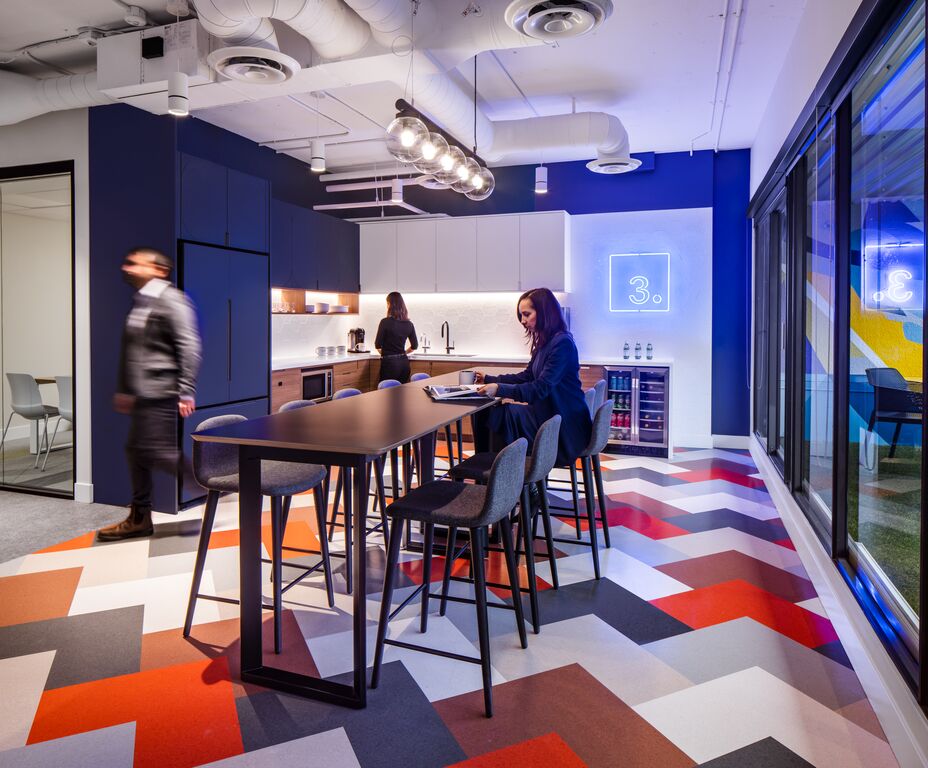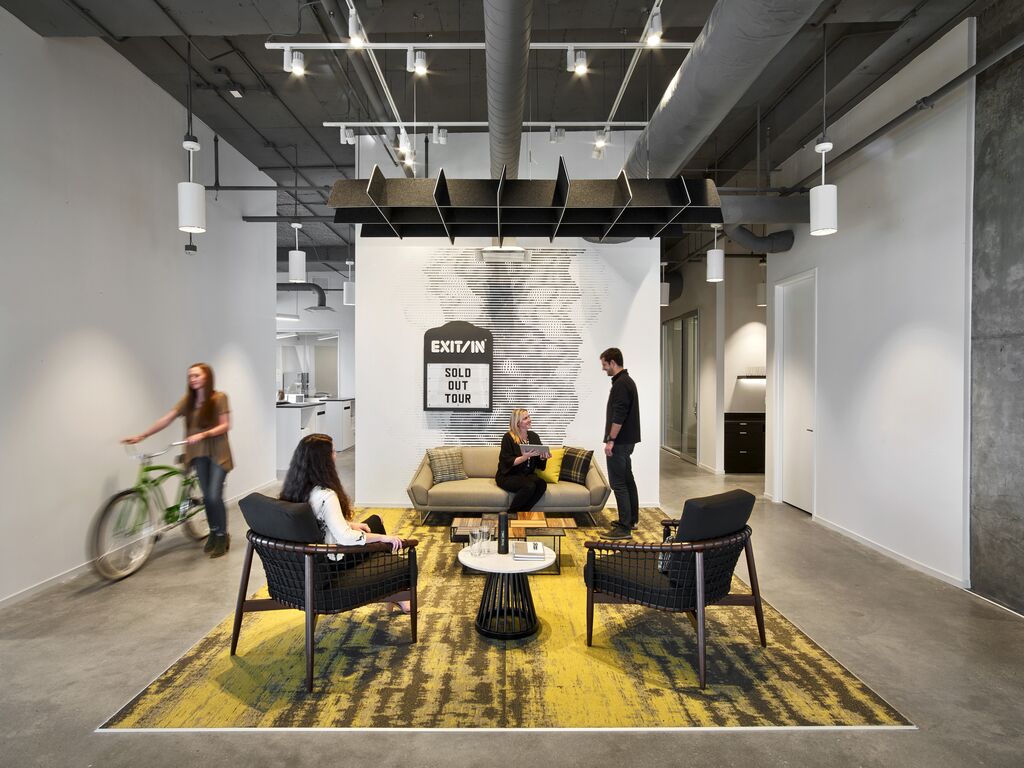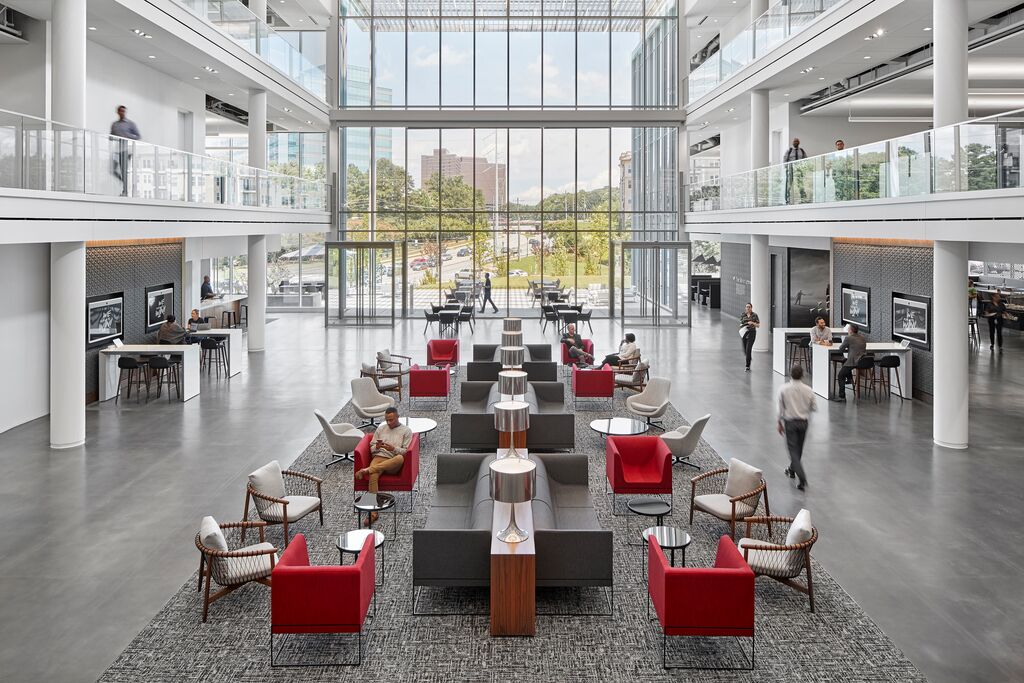The Tarkett Contract design team has curated some future flooring design trends that will help set the tone for spaces that welcome and encourage good vibes throughout.

IT’S A VIBE. That immediate reaction when you walk into a space, and it just feels good. Employees’ emotional connection to their workspace has a significant impact on performance and company results. When entering an office space, the first thing you can discover about a company’s culture is the ambiance and mood created by their interior.
Today, more than ever, employers are focused on providing a desirable destination that encourages onsite interactions in a post-pandemic world. Spaces are being designed with intentional specifications woven into the look and feel of every square foot. Companies are beginning to understand that effective workplace design needs to promote collaboration and communication, while positively stimulating their workforce to maximize efficiency.
With this focus in mind, the Tarkett Contract design team has curated some future trends that will help set the tone for spaces that welcome and encourage good vibes throughout.

Patterns that Punch
The last several years have been filled with uncertainty. To move beyond this, we are seeking visually impactful connections that are both decisive and impressive – leaving little room for ambiguity.
This requires dynamic textures, bold shapes featuring dramatic curves and expressive patterns that energize interior spaces. When balanced with a solid neutral, these exciting elements will pack the perfect punch of interest.

Color Impact
Color theory will be utilized to positively influence the mood and productivity of those using the interior space. From walls to floors and furnishings, palette selections will continue to be an intentional choice. Here are a few powerful tones you’ll see coloring the workplace.
- Bye-bye shades of gray! Neutrals are warming up and moving away from the standard gray we have grown accustomed to. Warm neutrals like oatmeal, linen and sand bring comfort and connect us to the natural world around us, while rust, spice and saffron create statement furnishings and add warmth.
- The perfect shade of blue. Blue promotes focus, calm, and tranquility – making it a fitting selection for a quiet area to relax and destress.
- “Amusing Yellow” lightens the mood and amplifies energy within a space. The hues “Citrus” and “Full of Zest” can amplify and serve as dramatic accents within furnishings.
To provide calming spaces as well as energetic zones, balance bright and bold colors with comforting neutrals. Apply calm blues to areas that require focus and select contrasting statement colors, such as “Full of Zest,” to areas that are meant for stimulating discussion.

In the Zone
The desire for hybrid work zones will require designers to prioritize flex spaces, focus corners and collaborative spaces for different needs. Employees want to be able to float and dance (ahem… while working) around the space with plenty of options for meeting as a group or focusing as an individual. Impromptu connections need spaces that are private but not too private, open but enclosed at the same time.

For collaborative spaces, flexible seating is a must, with modular styles that offer expansion or adaptation for different groups and personal preferences. Centering seating around cozy sofas will make the space more approachable and inviting so connections can happen naturally. Nooks are ideal for private conversations or avoiding potential distractions, while enclosed conference rooms satisfy the need for more privacy as needed.

Rising attention on employees’ mental health and the needs of neurodiverse thinkers has shown that a workspace can either help employees thrive or detract from their great potential. Whether neurodiverse or neurotypical, our community benefits from environments that can calm our minds for deep work or energize us for interactive collaboration. To achieve this balance, a variety of workspaces and design treatments is essential to give employees options.
While adaptable workspaces aid in fostering connectivity within the organization, there is also a need to connect with the greater community that exists outside the office walls. Building flexible options provides the opportunity to invite the community in to engage with the brand on a deeper level. For example, Tarkett’s Paris Showroom includes a studio space where interior designers are invited to work and access product samples. Soon, we’re hoping to expand this idea to a showroom near you.

